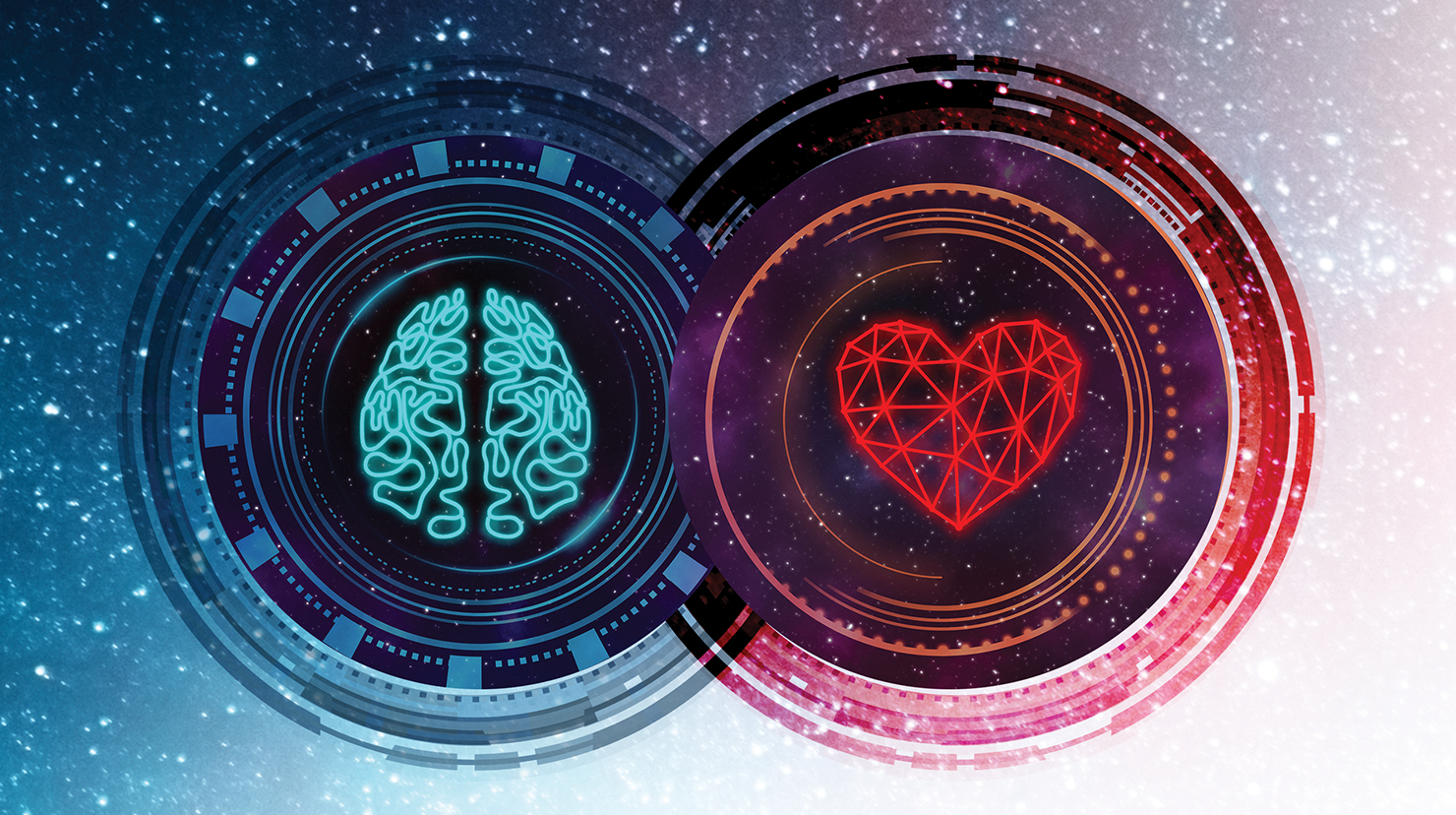It happened to Sandra Upton, Ph.D., when she attended a graduation party for the daughter of a coworker.
Upton and her husband sat down next to an elderly white woman who asked Upton, a Black woman, how she knew the father of the graduate. Upton—who serves as vice president of global diversity practice at the Michigan-based Cultural Intelligence Center—replied that she worked with the company’s founder and president. The woman looked at her and asked, “Oh, are you his scheduler?”
“When she saw me, it could have been through a number of cultural filters,” Upton says. “As an African American, as a woman—she made the assumption that my role had to be at a support level.”
For Upton, the encounter was a perfect example of unconscious bias—social stereotypes about certain groups of people that individuals form outside of their own conscious awareness. The stereotypes tend to be negative and can involve another’s race, gender, age, nationality, skin color, and more. It’s an issue that’s become especially topical over the past year, in light of widespread protests that have led to examinations of issues of race, privilege, and preference. Terms like “microaggression”—an unintended slight often motivated by unconscious bias—have since entered our everyday vocabulary.
“The insidious nature of unconscious bias is the unconscious part,” says Valerie Alexander, a screenwriter and unconscious bias expert in Los Angeles who recently gave a keynote speech on the topic at the Toastmasters District 39 Conference. “It’s that you are not aware you’re treating people differently. You have different beliefs about people, different expectations of people, or behave differently toward people because of some inherent trait like their gender or their age or the accent they speak with.”
“The [biased] thoughts will come, but how do you manage them? How do you make sure they don’t make their way into decisions, actions, and behaviors?”
—Sandra UptonThose biases come from a variety of sources, Alexander says, but they are primarily connected to how we were raised and the types of people we have—and haven’t—interacted with in our lives, as well as the types of media we consume.
“Most of us have a lot more media images of people of different races than actual encounters with people of different races,” Alexander says. “And how the media portrays those different people determines what we see as a threat.”
The portrayals don’t have to be threatening, she adds, to create a bias.
“The majority of children’s books that have a Black child in them, the Black child lives in poverty,” she says. “Think about the well-meaning white parent who says, ‘I want to make sure my kid is reading books with kids of different races.’ And that’s what they’re presented with, is a child who’s in poverty.”
Be Aware

No matter the source or nature of the bias, experts say, the important thing is to make yourself aware of unconscious bias before it creates negative consequences for you or others. It’s a concern that’s especially important in public speaking, where you often don’t know the makeup of your audience or might be speaking on a topic that could reveal unconscious bias. You don’t want to limit possibilities for yourself or your audience.
“Let’s say you’re speaking to a group of students about how to prepare for college, and you happen to be a white male,” Upton says. “There might be individuals in that audience who have a different background from you, and you may bring in some assumptions about that group. Say there are students from an urban community in the group—you might assume that, ‘You’re probably not going to go to college anyway,’ or, ‘This might be your first experience going to college.’ You’re assuming they’re first-generation just perhaps from what you’ve been taught or maybe seen in the media.”
“The insidious nature of unconscious bias is the unconscious part.”
—Valerie AlexanderWe often come at an issue through our own cultural lens and our own perspective. It doesn’t mean we’re wrong, but it can hinder our ability to communicate our message effectively.
“One of the most important parts of public speaking is having credibility with your audience,” says Pamela Fuller, author of the book The Leader’s Guide to Unconscious Bias and a thought leader on unconscious bias at leadership training firm FranklinCovey. “It’s important to recognize what biases you might have about that audience that could chip away at your credibility and have a plan to bridge that gap and to connect with them in a meaningful way.” Fuller will elaborate on this topic during her presentation at the Toastmasters International Virtual Convention this month.
Tackling Unconscious Bias
The good news about unconscious bias is that you can overcome it with time and practice. One of the most effective methods for doing so is called cultural intelligence—a skill set for working effectively in culturally diverse situations. Upton, who teaches the method at the Cultural Intelligence Center, says it has four components: drive, knowledge, strategy, and action.
Drive, Upton explains, has to do with how motivated and persistent you are when it comes to understanding and managing your biases. Knowledge involves gaining an understanding of the similarities and differences among cultures and how the reality of another’s experience may be different from the image in your head.
“I can be motivated and confident about wanting to manage my biases, but now I have to develop some knowledge to help me do that,” she says. “The audience that I’m going to give this presentation to—what are some of the cultural differences that might be represented in that audience? And how do I use that knowledge to make sure I’m not forming assumptions about different cultural groups and that my speech is bias-free?”
Knowledge also includes learning all you can about an audience before you speak, so you can keep an eye out for any specific unconscious biases, she says. The strategy piece comes in looking through a speech or presentation once you develop some knowledge about your audience, and adapting your presentation accordingly.
Action, finally, is all about behavior change, Upton says. “What behaviors do I want to be mindful of when I’m engaging with that audience? Even gestures—what gestures might be appropriate or inappropriate, or what gestures might I make that could potentially be offensive to a certain cultural group or that may come out of a bias I might have toward someone from a certain cultural group?”
The nice thing about cultural intelligence, she says, is that it’s a skill that can be measured and developed. Once a speaker learns how to use drive, knowledge, strategy, and action when planning a presentation, each area begins to flow into the others.
“Managing those biases is really what it’s all about,” Upton says. “The [biased] thoughts will come, but how do you manage them? How do you make sure they don’t make their way into decisions, actions, and behaviors?”
Learning From Missteps
If unconscious bias does rear its head during a speech, Alexander says, the best thing you can do is to use it as a learning opportunity.
“The two biggest things you have to be willing to do are to examine your own behavior and be open to feedback,” she says. “As a speaker, if someone says to you, ‘I don’t know if you realize it, but that example you used is really insensitive,’ your response better be, ‘Tell me more. I’m listening.’”
It happened to Alexander recently with a TEDx Talk she delivered that has been viewed hundreds of thousands of times online. Out of all those viewers, just one reached out to let her know that an axiom she described as a “Chinese blessing” was not in fact a Chinese blessing. Worse yet, Alexander illustrated that portion of the speech with a picture of a fortune cookie, which are not typically served at restaurants in China.
“That was hugely eye-opening,” Alexander says. “I followed up with her and we spoke for over an hour. At no point did I defend those choices or explain my intentions; that wasn’t the point of the conversation. My only goal was to understand her position and actively work to do better. All feedback is a gift, so as speakers, we should be incredibly grateful for it, even if sometimes it stings a little.
“How do I make sure I’m doing everything possible so that this speech has a positive impact on everybody who hears this message?”
—Pamela Fuller“I don’t know of any speaker who doesn’t want their audience to be uplifted and motivated and advanced as a result of having heard them speak,” she continues. “I know I do. If I leave a speech and I hear, ‘Wow, these people felt really excluded because of what you said,’ I feel like that’s a giant lost opportunity.”
For those worried about unconscious bias ruining their connection with an audience, Alexander says plenty of resources exist to ensure you aren’t unwittingly offensive. Books, websites, Facebook groups, and LinkedIn groups are good places to start, she says, but you also can consider asking others for feedback.
“You could post on LinkedIn and say, ‘I’m about to give a talk that I think might have problematic elements when it comes to the way I’m discussing immigration,’” she says. “Say, ‘I want to acknowledge everybody’s humanity, and if there’s anybody who would be willing to give me some feedback on this, I would be open to it.’”
All About Awareness
In the end, a big part of managing unconscious bias has to do with awareness. Awareness of your thoughts, awareness of what you’re saying, and awareness of what you’re planning to say. Even the words you use deserve consideration.
“When you’re giving a speech, you tell a story and you get to move the story in the direction you’d like it to go,” Fuller says. “You get to pick the words that you use. Those words can be inclusive—they can be complete and whole—or you can tell just one story. Be really conscious about whether your word choice is focused only on your own lens, or whether your word choice is open enough and inclusive enough to include everyone who might engage with what you’re saying.”
The earlier in the process you start thinking about bias, the more successful you’ll be at weeding it out, Upton adds.
“As I prepare my outline or begin to fill it in with the content, what assumptions am I bringing to this topic or presentation?” she says. “Just ask yourself that question, and you’ll be amazed at what you see. The focus is never about intent; it’s about impact. It’s, ‘How do I make sure I’m doing everything possible so that this speech has a positive impact on everybody who hears this message?’”
Editor’s Note: Want to brush up on your cultural intelligence? Watch this webinar series for additional tips on how to communicate across cultures.
Greg Glasgow is a Denver-based author and freelance writer and a frequent contributor to the Toastmaster. His debut nonfiction book, Disneyland on the Mountain: Walt, the Environmentalists, and the Ski Resort That Never Was, was published in September 2023.
Related Articles

Personal Growth
Emotional Intelligence: The Other Kind Of Smart

Diversity and Inclusion
Helping All Members Succeed

Communication


 Previous
Previous
 Previous Article
Previous Article